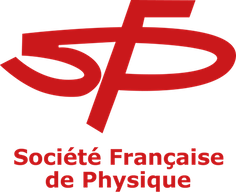Orateur
Description
First-forbidden beta decays play an important role in several domains of physics. First, in astrophysics, where nuclear data such as the half-life govern stellar evolution and nucleosynthesis [1]. Second, they are of interest for nuclear reactors physics as first highlighted in 2014 [2]. In first-forbidden $\beta$-decays, the form factor of the leptonic spectra are not equal to one as for allowed decays. It has been shown that it could have a non negligeable impact on the shape of the antineutrino energy spectra. Among the models developed since then, which do not all tend to agree [3, 4, 5, 6], some even state that it could solve the reactor antineutrino shape anomaly.
New theoretical calculations of the first-forbidden form factors associated to summation calculations [7] and dedicated experimental measurements would be useful to corroborate or negate already existing predictions.
Charge-exchange excitations corresponding to beta-decay first forbidden transitions in nuclei have been studied in the self-consistent proton-neutron quasiparticle random-phase approximation (pnQRPA) using the finite-range Gogny interaction [8]. No parameters beyond those included in the effective nuclear force are included. Axial deformations are taken into account for both the ground state and charge-exchange excitations.
With this formalism, nuclear matrix elements have been computed for operators derived from the multipole expansion of the weak current [9]: spin-dipole, anti-analog dipole and pseudoscalar-axial vector and tensor-polar vector operators. Those operators come to complete the already existing Fermi and Gamow-Teller operators already considered in Ref. [8] in order to have a simultaneous description of the allowed and first-forbidden $\beta$-decays.
At this conference, first results of the charge-exchange operators will be presented for both spherical and axially deformed nuclei with a comparison to other theoretical models.
References:
[1] M. Arnould, S. Goriely, and K. Takahashi. The r-process of stellar nucleosynthesis: Astro- physics and nuclear physics achievements and mysteries. Phys. Rept., 450:97–213, 2007.
[2] A. C. Hayes, J. L. Friar, G. T. Garvey, Gerard Jungman, and Guy Jonkmans. Systematic Uncertainties in the Analysis of the Reactor Neutrino Anomaly. Phys. Rev. Lett., 112:202501, 2014.
[3] Dong-Liang Fang and B. Alex Brown. Effect of first forbidden decays on the shape of neutrino spectra. Phys. Rev. C, 91(2):025503, 2015. [Erratum: Phys.Rev.C 93, 049903 (2016)].
[4] X. B. Wang and A. C. Hayes. Weak magnetism correction to allowed β decay for reactor antineutrino spectra. Phys. Rev. C, 95(6):064313, 2017.
[5] X. B. Wang, J. L. Friar, and A. C. Hayes. Nuclear Zemach moments and finite-size corrections to allowed β decay. Phys. Rev. C, 94(3):034314, 2016.
[6] J. Petkovic, T. Marketin, G. Martinez-Pinedo, and N. Paar. Self-consistent calculation of the reactor antineutrino spectra including forbidden transitions. J. Phys. G, 46(8):085103, 2019.
[7] M. Estienne et al. Updated Summation Model: An Improved Agreement with the Daya Bay Antineutrino Fluxes. Phys. Rev. Lett., 123(2):022502, 2019.
[8] M. Martini, S. Peru, and S. Goriely. Gamow-Teller strength in deformed nuclei within the self- consistent charge-exchange quasiparticle random-phase approximation with the Gogny force. Phys. Rev. C, 89(4):044306, 2014.
[9] Aage Bohr and Ben R Mottelson. Nuclear Structure. World Scientific Publishing Company, 1998.

